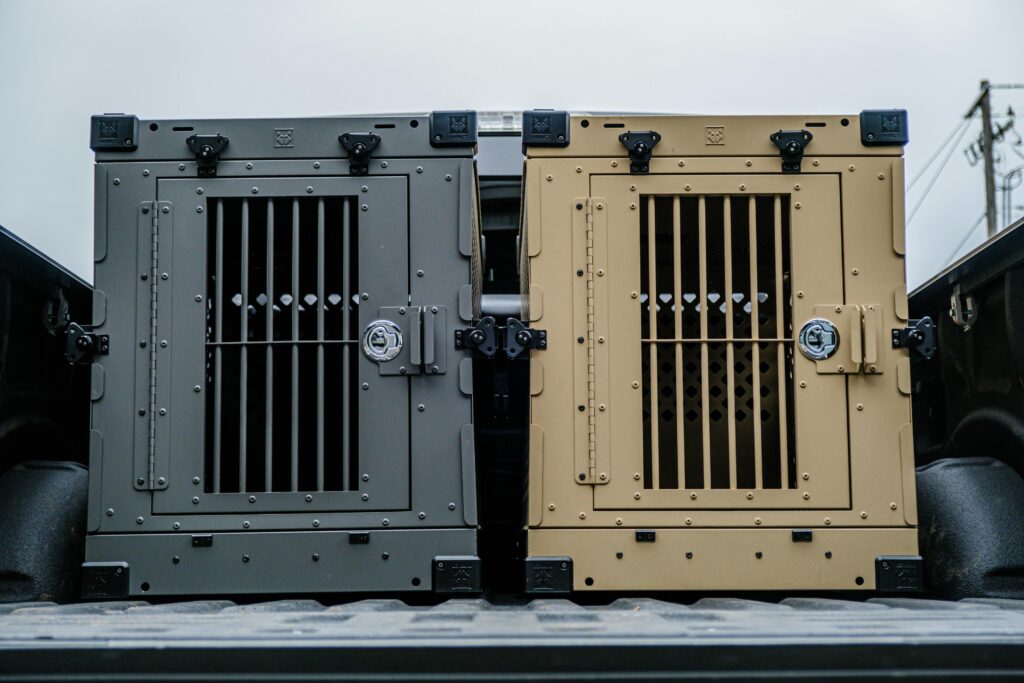Although travelling with pets can be an interesting journey, their comfort and safety are always the first priority. Whether your trip is a road trip, a flight to a far-off location, or even a train ride, thorough preparation and planning will help your pet remain happy and secure. This post will walk you through all facets of pet travel, therefore guaranteeing peace of mind and a comfortable trip for the two of you.

Why Travel Requires Pet Safety
Pets may find travel challenging because of strange surroundings, loud noises, and a changed daily schedule. It guarantees your pet’s welfare and helps avoid mishaps, injuries, or diseases by means of safety precautions. Let’s explore doable advice to keep your pet safe on travel.
Getting ready for pet travel:
Immunizations and health checks
See your veterinarian beforehand before starting any journey.
Regular Health Exam
Get your pet checked thoroughly to ensure it is fit for travel. The veterinarian can evaluate its emotional and physical state and offer guidance specifically for your pet.
Revised Immunizations
Many places, particularly overseas ones, demand evidence of current vaccinations. Especially crucial are vaccinations against rabies.
ID tags and microchip
Crucially, microchipping your pet and changing their ID tags with your contact details will help These could be lifesaver if your pet disappears on travel.
Stow Essentials for Your Pet
Having the correct materials guarantees your pet friend a comfortable travel.
Enough food and drink should be packed for the whole travel. To simplify feeding, pack portable bowls.
Pills
If your pet takes medication, make sure you have enough for the trip, plus extras should, of course, be delayed.
Comfort Accessories
To help you relax throughout the travel, pack familiar objects such as a blanket, bed, or beloved toy.
Knowing Travel Policies and Guidelines
Different kinds of transportation have particular guidelines for animals.
Airlines Policy
Review the airline’s pet policy on fees, crate requirements, and breed limitations.
State and Country Guidelines
If you plan to travel overseas or across state borders, investigate pet access rules. Certain areas call for quarantine times or health certificates.
Pet Safety During Road Trips
Selecting the Correct Carrier or Harness
correctly secure your pet to avoid harm.
Crates and Carriers
Choose a crate or carrier suited for your pet that has been crash tested. Away from airbags, position it in the cargo area or rear seat.
Pet Sitting Belts
Another great choice is a pet seat belt or harness, which keeps your pet secure yet allows some movement mobility.
Line the carrier with absorbent pads and offer toys to help your pet stay calm.
Preserving a Comfortable Environment
Make your pet’s place stress-free.
Temperature Management
Maintain the temperature of the car within reasonable range. Never leave your pet alone in a parked car since temperatures can turn dangerous very fast.
Regular Breakdowns
Stop every two to three hours to let your pet stretch their legs and for bathroom breaks.
Calming Agents
If your pet becomes anxious, use vet-approved sedatives, pheromones, or calming sprays.
Hydration and Food Advice
On the journey, good nourishment and hydration help your pet stay healthy.
Dinner Plans
To prevent motion sickness, feed your pet a minimum of three hours before the journey.
Liquidity
At every break, offer water to avoid dehydration—especially in warm weather.
Consumes
Along the way, pack goodies for positive reinforcement.
Flying Safely with Animals
Scheduling the correct flight
For your pet, select planes with the shortest journey times and the least stress.
Direct Travel
Choose non-stop flights to spare your pet from layovers and help to lower stress.
Pet-friendly Airlines
Choose pet travel oriented, reputable airlines like Alaska Airlines or JetBlue that give pet safety a top priority.
Cabin or cargo?
While larger dogs might have to enter the cargo hold, little pets can generally ride in the cabin. Prioritize size and weight constraints.
Getting the Pet Carrier ready
Flying with animals calls for an airline approved carrier.
Size Counts
The carrier should let your pet lie down comfortably, turn around, and stand.
Make sure the carrier is airily circulated.
Identification
Clearly name your pet and provide your contact details on the carrier. If they are cargo-bound, include a message with directions on feeding and watering.
Prepare at every level to guarantee a seamless experience for your pet both before, during, and after the flight.
Before the Flight
Before you get to the airport, work out your pet to exhaust them. Arriving early helps you to manage security and check-in successfully.
Throughout the Flight
Calm your pet with comforting words or by presenting a familiar object like a blanket.
Following the Aircraft
Immediately upon arrival, especially if your pet has been in the cargo hold, check on her. Give them water and a restroom break.
Investigating Pet-friendly Choices
Plan beforehand since not every train or bus lets pets.
Policies on Pets
Ask the train or bus provider for certain policies like size restrictions and extra costs.
Regional interpretations
Pet friendliness varies depending on the area. On some lines, for instance, Amtrak lets small pets travel.
Book early.
Pet lodging may be few; hence, book early.
Getting Your Pet Ready Travelwise
Put your pet in a position for comfortable and safe travel.
Desensitization
Expose your pet to related sounds at home to help them identify train or bus noises.
Passenger Comfort
Make sure your pet is acclimated to spending time in a strong, comfortable carrier.
Potty breaks
Before boarding, take your pet for a toilet break since stops may be rare.
Keeping Your Animal Calm
Less likely to be anxious or disruptive are calm pets.
Quiet Period
Chews or snacks will keep your pet occupied and help to reduce meowing or barking.
Stay near.
Sit next to your pet to provide comfort all along the way.
Track Behaviour
Look for stress indicators like too much panting or whining and quickly resolve them.
Specific Considerations for Various Pet Types
Traveling with fines
Given their sensitivity to change, cats sometimes call for more care.
Safe Transportation
Cats absolutely need a strong, well-ventilated carrier. Line it with a nice blanket.
Litter Box Variables
Use a portable litter box at breaks for longer travels.
Steer clear of overdosing.
Keep your cat in the carrier to stop stress or escape in strange surroundings.
Carrying Dogs on Travel
With enough planning, dogs can adjust really nicely for travel.
Exercise Before Travel
Before the trip, tire your dog to help calm the unrest.
Safety in Leashes
When outside the car, always use a sturdy leash and harness.
Sociability
Beforehand, expose your dog to several settings to help to lower nervousness.
Travelling with birds or small animals
Birds and small animals call for unique housing.
Cages and Controllers
Invest in tiny, robust carriers with lots of padding and ventilation.
Tempers Control
During travel, keep small animals safe from harsh temperatures.
Private Areas
To help with stress, keep the carrier in a quiet space.
Post-Travel Advice for Pet Safety:
Returning Your Pet to Routine
After the vacation, help your pet return to its usual schedule.
Known Environment
As they were leaving, they arranged their bed, toys, and food bowls as they used them.
Track your health and look for symptoms of illness or stress, including odd behaviour or appetite loss.
More Focus
To make your pet feel safe, treat them incredibly kindly and provide them with more playtime.
Maintenance and cleaning
Make sure your pet’s things are neat and ready for the next travel.
Cleaners of Carriers
To get dirt and smells out, wash bedding and carriers.
Examine for Damage
Look over your pet for any travel-related injuries or soreness.
Restock Resources
Replace food, drink, and garbage bags, among other used goods.
Drawing on Experience for Learning
Every trip increases your knowledge about the travel requirements of your pet.
Notes
Record both areas that might use improvement and those that worked well.
Training
Particularly if your pet suffers from anxiety, think about further training for the next excursions.
Create the Next Adventure’s itinerary.
Apply the knowledge to ensure your next trip goes even more perfectly.
Plan Travel to Maximize Safety and Pleasure
Optimizing your travel preparations for your pet’s needs is vital regardless of the length of the trip. To guarantee a smooth journey, consider elements such as travel schedules, pet-friendly lodging, and emergency readiness.
Bonus Advice for Traveling with Pets:
Selecting Pet-Friendly Accommodations
Choosing the correct lodging will help you be free of stress on your journey.
Research Housing Choices
Lists of pet-friendly hotels, motels, and vacation rentals abound on websites like BringFido and Airbnb.
Examine Policies
Verify pet policies prior to reservation. Certain hotels could charge extra fees or have pet size limitations.
Pet Accessories
Search for locations with facilities, including pet beds, snacks, or specifically designed play spaces.
Making a Pet Travel List
Make sure you stay orderly by creating a thorough checklist before you travel.
Necessary Objects
Add food, drink, prescriptions, carriers, leashes, trash bags, and grooming tools.
Significant Documents
Along with a health certificate and emergency contacts for vets close by your location, pack immunization records.
Items of Comfort
Add known toys, blankets, or anything else your pet finds comfortable.
Managing Crashes
Anticipating the unanticipated can save lives.
Find local vets or animal hospitals close to your location ahead of time.
First Aid Handbook
Pack a pet-specific first aid kit, including tweezers, antiseptic wipes, and bandages.
Emergency Notifications
Easily accessible is a list of emergency contacts, including your main veterinarian and pet poison control facilities.
advantages of travelling with animals
Although pet travel calls for more work, the benefits are incountable.
Strengthened connection
Road trips together can strengthen your relationship with your pet.
Lowered Anxiety
Staying with their owners gives pets more security than being left behind.
Positive Effects on Health
Discovering new locations with your pet motivates physical exercise, which helps your pet as well as yourself.
Conclusion
When done correctly, travelling with pets can be a fulfilling event. Following these guidelines will help you to guarantee the comfort and safety of your animal friend all along the trip. Your pet will appreciate the journey just as much as you do with enough preparation, meticulous attention to detail, and an eye for their well-being.
Recall that a safe and contented pet guarantees fun travel for all those involved!
